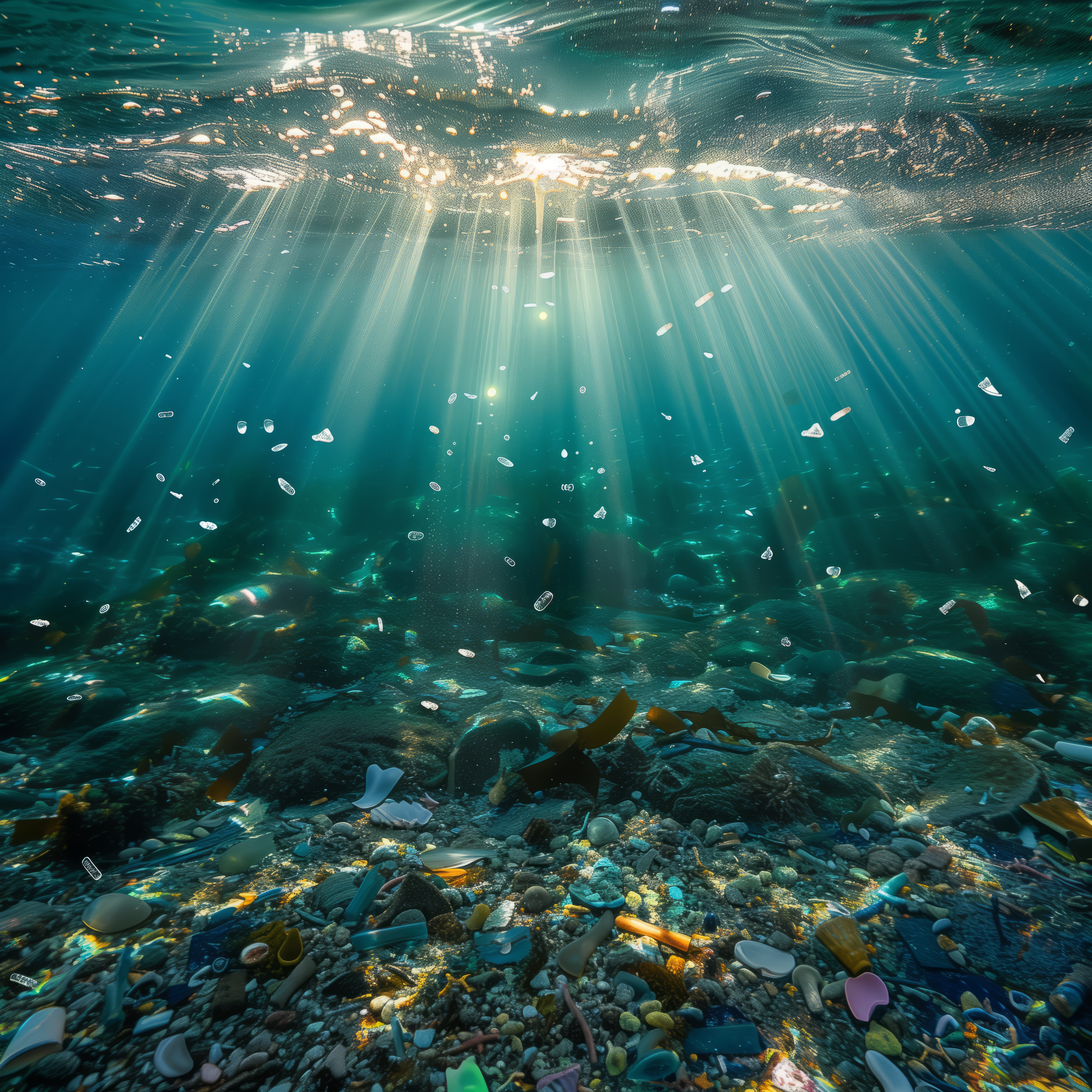The Hidden Threat: The Alarming Journey of Microplastics into Our Food Chain
July 9, 2024
 593
593 
Did you know that the United Nations Environment Programme (UNEP) estimated that approximately 8 million tons of plastic enter the world’s oceans each year. The amount of plastic in the ocean is expected to double in the next 15 years, and by 2050, it could outweigh all the fish in the sea by weight.
And it gets worse- The fossil fuel industry plans to increase plastic production by 40% over the next decade, which will lead to more plastic ending up in the oceans. This increase in plastic production is driven by the low cost of shale gas, which is used to produce ethane, a key component in plastic manufacturing.
Microplastics come from various sources including larger plastic debris that breaks down into smaller pieces, resin pellets used in plastic manufacturing, and microbeads found in cosmetics and personal care products. These microplastics form as plastic breaks down into small particles that can be ingested by fish and other marine life. Not only do they pose a threat to the health of fish but potentially affects the food chain.
Microplastics can have significant impacts on marine life. Fish, shellfish, and other marine animals can ingest them, causing physical harm and even death. Microplastics can also absorb and concentrate toxic chemicals, making them even more harmful to marine life.
Research has shown that microplastics can also affect reproductive health… leading to population declines. For example, a study found that 26% of fish species globally ingest microplastics, which can impact their ability to survive and reproduce.
While research on their health effects is still in its early stages, emerging evidence suggests that microplastics may pose several health risks to humans
Firstly, while the direct impacts of microplastics on human health are still being investigated, diet and fitness may have a role. Microplastics can be ingested through contaminated food and water, inhaled by breathing in airborne microplastics or absorbed through the skin.
It’s important to note that many of these effects have been primarily observed in laboratory studies on cells or animals, and their direct relevance to human health is still being investigated as to the complexity of microplastics, including their diverse sizes, shapes, and chemical compositions that makes it challenging to establish clear causal relationships with specific health outcomes. Researchers are working to better understand:
While the full extent of health risks remains unclear, the ubiquitous presence of microplastics in the environment and their detection in human tissues have raised significant health concerns. Ongoing research aims to provide more conclusive evidence about the health impacts of microplastics, which could inform future public health policies and plastic management strategies.
If you think that the average person’s exposure to microplastics is negligible, then consider this!
Many everyday food products have been found to contain microplastics, often due to environmental contamination or food processing and packaging. Here are some common items that likely contain microplastics:
Many everyday food products have been found to contain microplastics, often due to environmental contamination or food processing and packaging. Here are some common items that likely contain microplastics:
Bottled water has been shown to contain high levels of microplastics.
Tap water also contains microplastics, though generally at lower levels than bottled water.
Fish and shellfish are significant sources of dietary microplastics due to ocean pollution.
An average person may consume about 53,864 microplastic particles annually from seafood.
Plants can absorb microplastics through their roots.
Apples and carrots are among the most contaminated, with over 100,000 microplastics per gram.
Most table salt brands contain microplastics.
An average adult may consume around 2,000 microplastic particles per year from salt alone.
Contains about 28 microplastic particles per liter, more than soda or energy drinks.
Plastic tea bags can release billions of micro- and nanoplastic particles into a single cup.
Highly processed products like chicken nuggets, plant-based burgers, and tofu tend to have higher levels of microplastics.
Foods stored in plastic packaging are likely to contain microplastics.
Many healthy lifestyle blogs encourage people to eat fresh, unprocessed foods as part of their healthy diet. But did you know? These everyday items have also been shown to contain microplastics.
To reduce microplastic intake, experts recommend:
While it’s challenging to completely avoid microplastics in food, being aware of their sources and making informed choices can help reduce exposure.
References:
https://www.ncbi.nlm.nih.gov/pmc/articles/PMC10151227/
https://pubs.acs.org/doi/10.1021/envhealth.3c00052
https://www.nature.com/articles/s41591-024-02968-x
https://www.bonappetit.com/story/microplastics-food
https://edition.cnn.com/2024/04/22/health/plastics-food-wellness-scn/index.html
https://edition.cnn.com/2024/04/22/health/plastics-food-wellness-scn/index.html
https://www.ewg.org/news-insights/news/2024/03/new-study-links-microplastics-serious-health-harms-humans
https://www.bbc.com/future/article/20230103-how-plastic-is-getting-into-our-food
Microplastics are in our bodies. Here’s why we don’t know the health risks

A new study suggests that a widely used sugar substitute found in diet sodas, chewing gum, and low-sugar yogurt may elevate insulin levels. This could increase the long-term risk of heart disease. “Artificial sweeteners have infiltrated nearly all types of food, making it crucial to understand their long-term health effects,” said Yihai Cao, senior author […]

Diet Coke has long been a fan-favorite among soda lovers who want a fizzy, guilt-free alternative to traditional soft drinks. While its zero-calorie, zero-sugar label makes it seem like a healthier option, the reality is far more concerning. Despite its undeniable popularity, Diet Coke’s nutritional profile has raised red flags among health experts for years. […]

New study shows that embracing an anti-inflammatory, plant-forward diet can support cognitive function and help reduce the risk of dementia. What You Eat Shapes Your Brain The food you eat doesn’t just impact your body—it also affects your brain. Research suggests that eating an anti-inflammatory, plant-based diet can help improve memory, focus, and overall brain […]